Il sessantottesimo compleanno di Biagio
Biagio’s 68th birthday
2020, grafite su carta, fotografie abbandonate di una famiglia sconosciuta, dimensioni variabili. 2020, graphite on paper, abandoned photographs of an unknown family, variable dimensions.
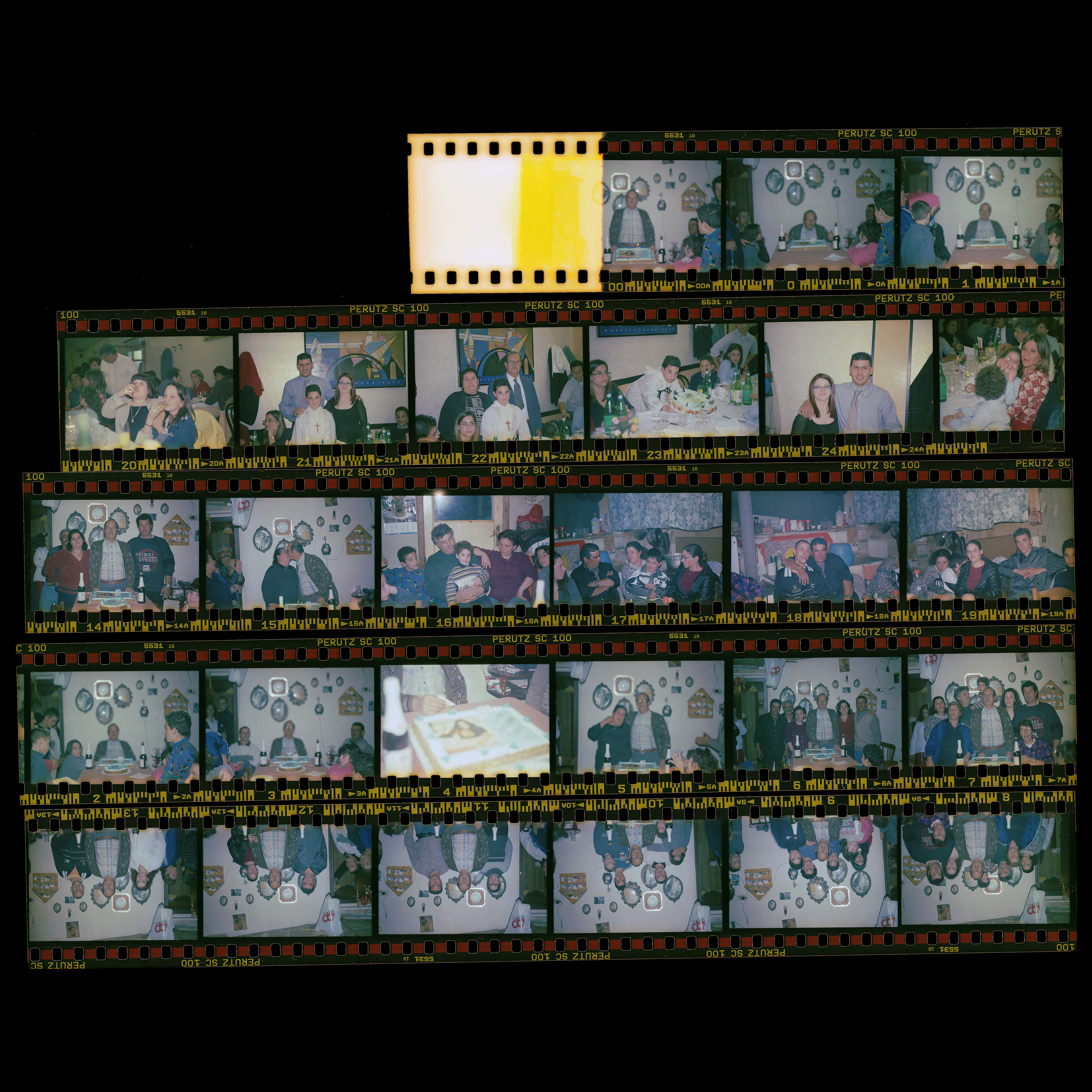
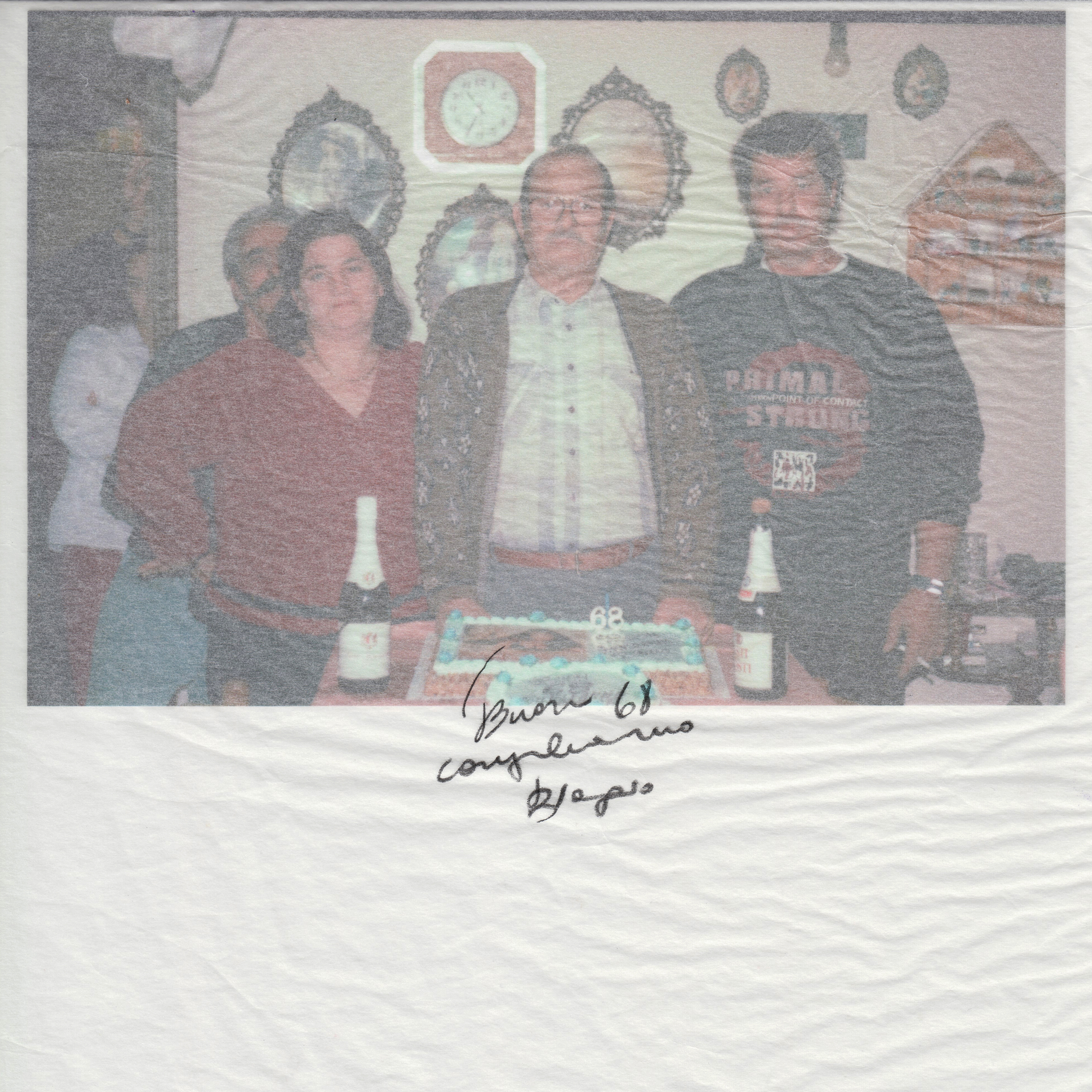
Nell’estate 2018, da una bancarella del mercato d’antiquariato di Marina di
Modica, in provincia di Ragusa, ho comprato una macchina fotografica Zenit
del 1990. Insieme ad essa, il mercante mi ha regalato due rullini usati scattati dalla stessa macchina, uno dei quali ancora inserito al suo interno. Le
pellicole - di marca Perutz e fuori produzione da vent’anni - erano piuttosto
datate, le ho quindi sviluppate senza
l’aspettativa di trovarvi nulla, per pura curiosità.
Sorprendentemente è invece
emersa una collezione di scatti privati che ruotano intorno al compleanno di
un signore di nome Biagio: il nonno di una sconosciuta famiglia del ragusano.
Questo fattore di profonda personalità, di empatia verso una famiglia di sconosciuti, mi ha spinta a “scavare” nei negativi giunti a me per caso, investigandone i dettagli per collocare questa scena nello spazio e nel tempo: sulla torta compare la scritta “Buon 68 Compleanno Biagio”, sulla felpa di un nipote compare il nome di un’associazione calcistica di Scicli, alle spalle di un bambino appare il calendario del 2000.
I disegni realizzati tramite il ricalco su un supporto cartaceo, insieme agli ingrandimenti digitali effettuati sulle fotografie, rivelano dettagli curiosi sulle personalità dei vari membri della famiglia o situazioni che sfuggono alla logica del ritratto. Lo stile volutamente fumettistico e il segno frammentato contribuiscono nell’alienare alcune dinamiche dalla scena principale, ricostruendo una narrativa parallela. Rompendo l’immagine così caratterizzata del ritratto fotografico, i personaggi se ne liberano emergendo come partecipi di un’altra possibile storia, unica e indipendente.
![]()
Lo stile è tipicamente famigliare, in entrambe le accezioni del termine: è
vicino alla sensibilità di ognuno di noi, possiamo immediatamente leggere
il contesto in cui le foto sono state scattate e i rapporti che intercorrono tra
i diversi membri della famiglia; questo perché ognuno si è trovato immerso
in una situazione analoga, che sopravvive ostinatamente all’evoluzione della
tecnica: non ha importanza se lo strumento sia la pittura nel Rinascimento,
la macchina fotografica di grande formato di Thomas Struth negli anni ‘90 o
l’iPhone della zia allo scorso Natale. Il linguaggio implicito della ritrattistica permea inconsapevolmente ognuno di noi, incluso ovviamente anche l’uomo o la donna dietro all’obiettivo del compleanno di Biagio che non ha nessuna voglia di comporre l’immagine: famigliari si posizionano seguendo i preconcetti della foto di gruppo ma in modo caotico e nell’inquadratura
spuntano elementi che un fotografo definirebbe di disturbo - un sacchetto
della spesa, mani e teste che rubano il fuoco automatico della macchina e via
dicendo.
Questo fattore di profonda personalità, di empatia verso una famiglia di sconosciuti, mi ha spinta a “scavare” nei negativi giunti a me per caso, investigandone i dettagli per collocare questa scena nello spazio e nel tempo: sulla torta compare la scritta “Buon 68 Compleanno Biagio”, sulla felpa di un nipote compare il nome di un’associazione calcistica di Scicli, alle spalle di un bambino appare il calendario del 2000.
I disegni realizzati tramite il ricalco su un supporto cartaceo, insieme agli ingrandimenti digitali effettuati sulle fotografie, rivelano dettagli curiosi sulle personalità dei vari membri della famiglia o situazioni che sfuggono alla logica del ritratto. Lo stile volutamente fumettistico e il segno frammentato contribuiscono nell’alienare alcune dinamiche dalla scena principale, ricostruendo una narrativa parallela. Rompendo l’immagine così caratterizzata del ritratto fotografico, i personaggi se ne liberano emergendo come partecipi di un’altra possibile storia, unica e indipendente.
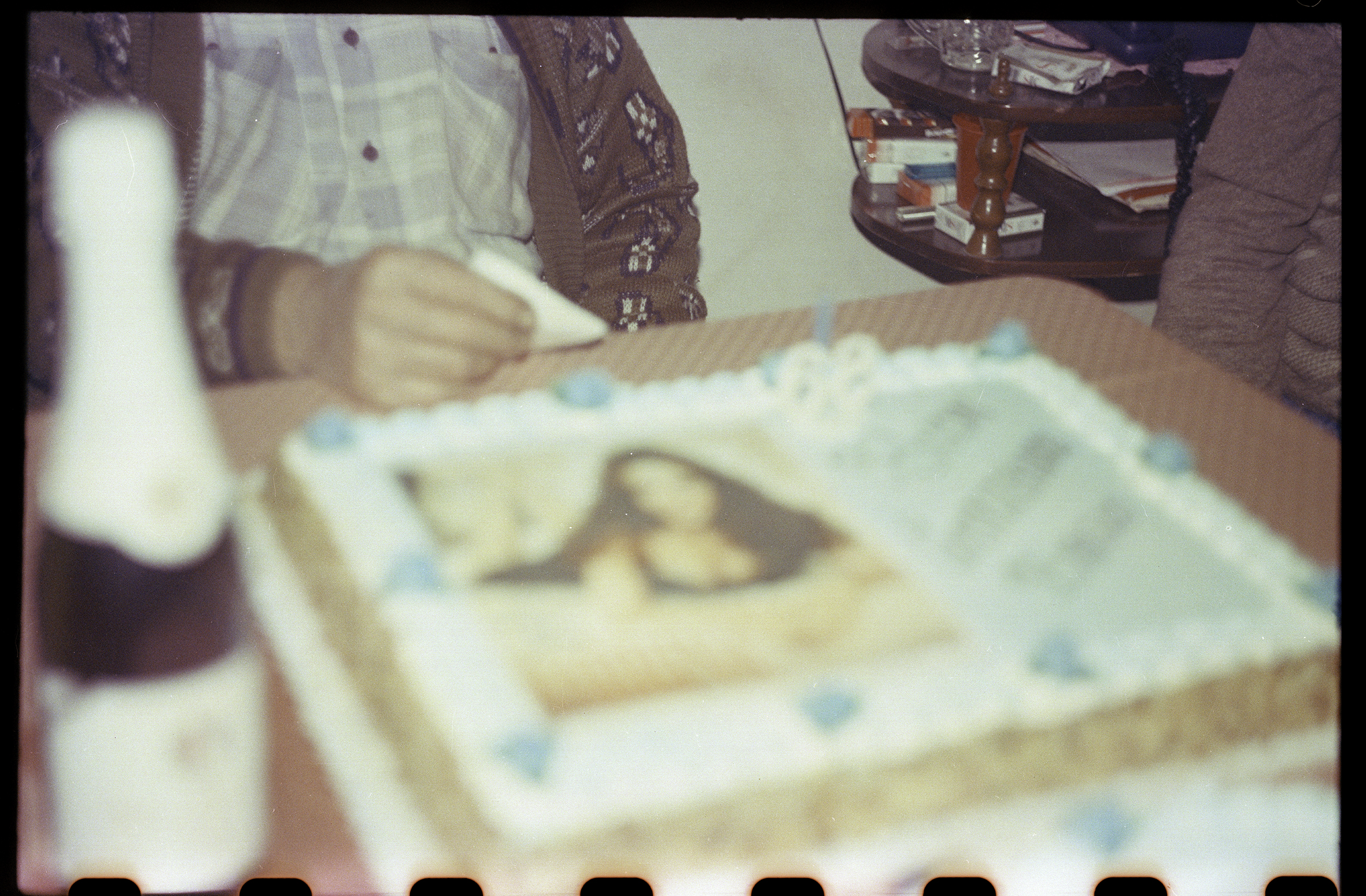
In summer 2018, I bought a 1990 Zenit camera from a stall at the flea market in Marina di Modica, in the province of Ragusa. Together with it, the merchant gave me two used rolls of film, one of which was still inside the camera. The films - brand Perutz and out of production since twenty years - were quite dated, so I developed them without expectations of finding anything, out of pure curiosity. Surprisingly, however, a collection of private shots emerged. These photos revolve around the birthday of a man named Biagio: the grandfather of an unknown Ragusan family.
The style is typically familiar, in both senses of the term, it’s a kind of sensibility which is in all of us. We can immediately read the context in which the photos were taken and the relationships that exist between the different family members, because everyone has found themselves immersed in a similar situation. It is a form of experience which stubbornly survives the evolution of the technique, whether the instrument is painting in the Renaissance, the large format camera by Thomas Struth in the 90s or the aunt’s iPhone last Christmas. The implicit language of portraiture unknowingly permeates each of us, obviously including the man or woman behind the lens at Biagio's birthday who has no desire to compose the image. Family members position themselves following the preconceptions of the group photo but in a chaotic way, and in the frame there are elements that a photographer would define as disturbing - a shopping bag, hands and heads that steal the automatic focus of the camera and so on.
This factor of profound personality, of empathy towards a family of strangers, pushed me to "dig" into the negatives that came to me by chance, investigating the details which allow one to place this scene in space and time. Through the digital blowup I analyzed the details that lie in the background of the story: on the cake the inscription "Happy 68th Birthday Biagio" appears, on the sweatshirt of a nephew appears the name of a football club from Scicli, behind a child appears the calendar of 2000.
The drawings - in a deliberately comic style - , made by tracing on a paper support, reveal curious details about the personalities of the various members of the family or situations that escape the logic of the portrait. The characters escape and become potential participants in an alternative narrative, unique and independent. By breaking the rules and structure of the family portrait, the characters escape and become potential participants in an alternative narrative, unique and independent.
This factor of profound personality, of empathy towards a family of strangers, pushed me to "dig" into the negatives that came to me by chance, investigating the details which allow one to place this scene in space and time. Through the digital blowup I analyzed the details that lie in the background of the story: on the cake the inscription "Happy 68th Birthday Biagio" appears, on the sweatshirt of a nephew appears the name of a football club from Scicli, behind a child appears the calendar of 2000.
The drawings - in a deliberately comic style - , made by tracing on a paper support, reveal curious details about the personalities of the various members of the family or situations that escape the logic of the portrait. The characters escape and become potential participants in an alternative narrative, unique and independent. By breaking the rules and structure of the family portrait, the characters escape and become potential participants in an alternative narrative, unique and independent.
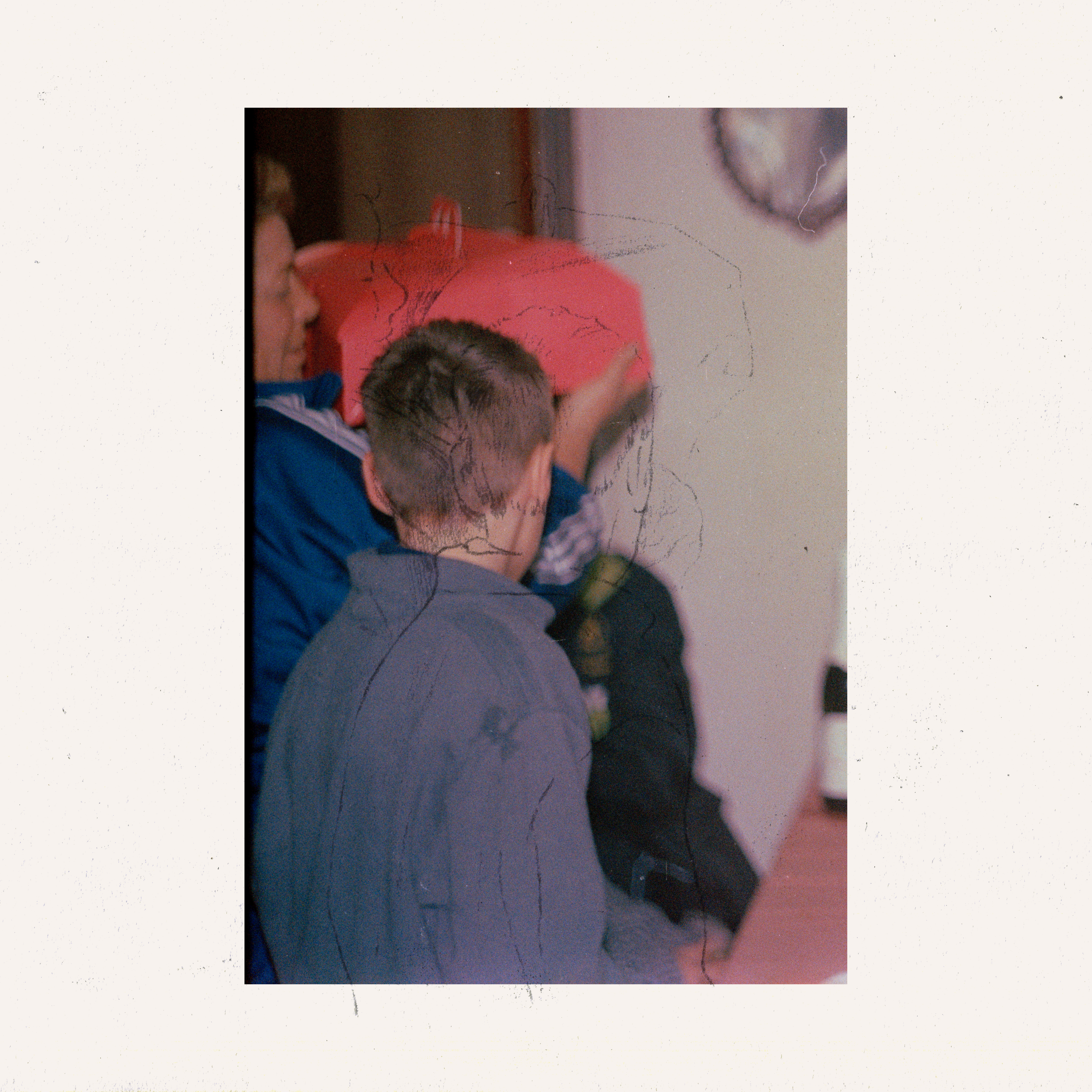
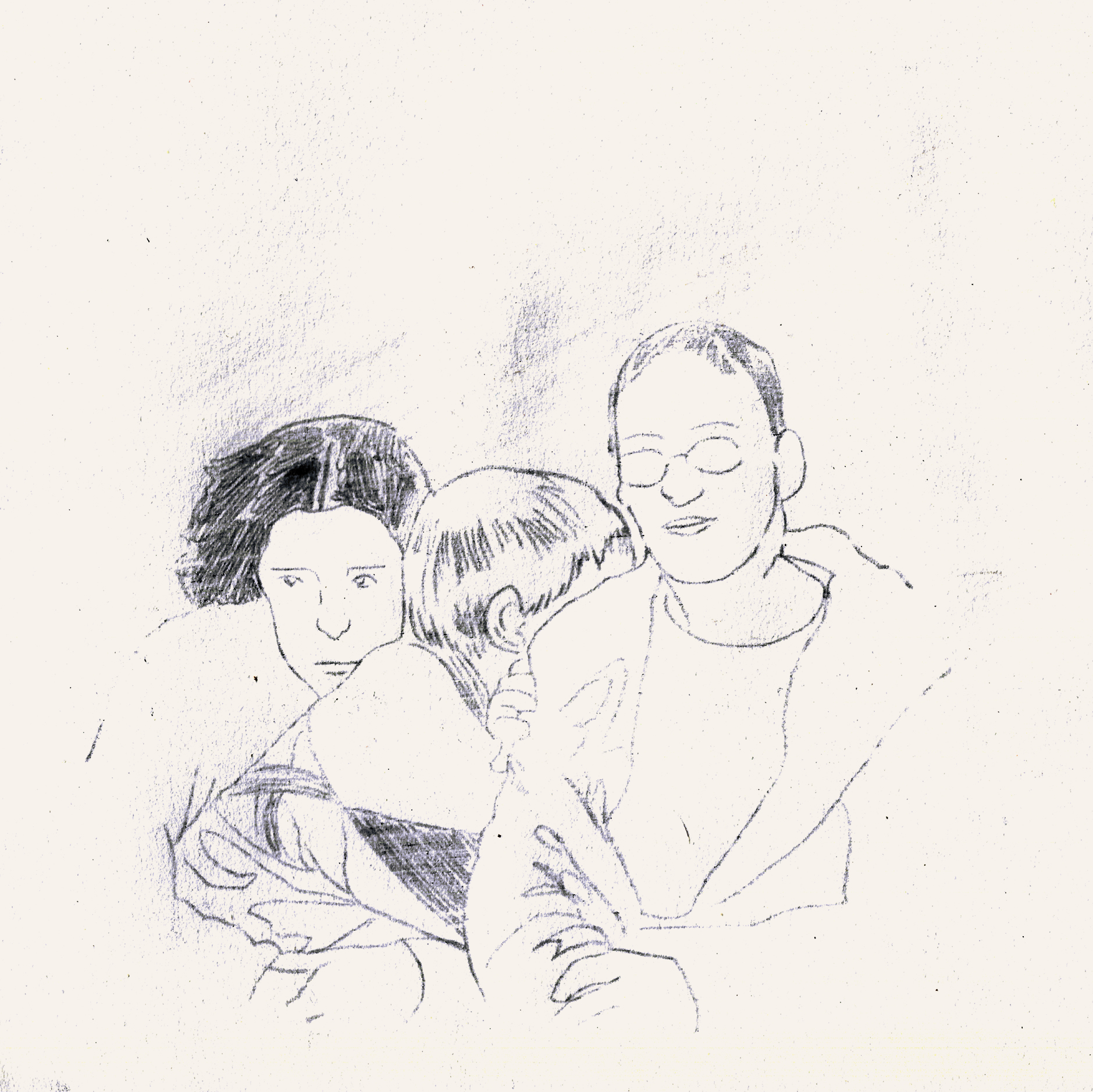
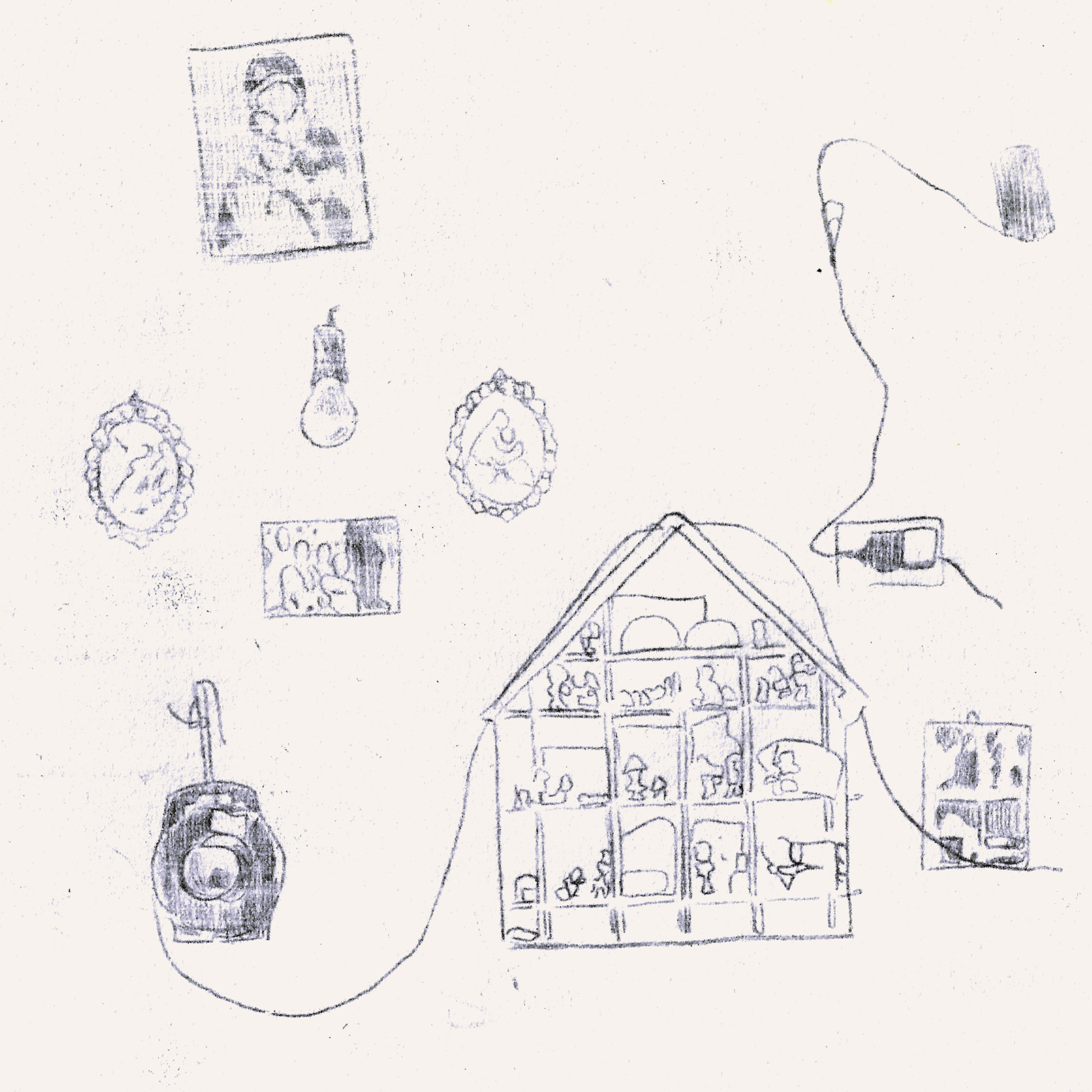

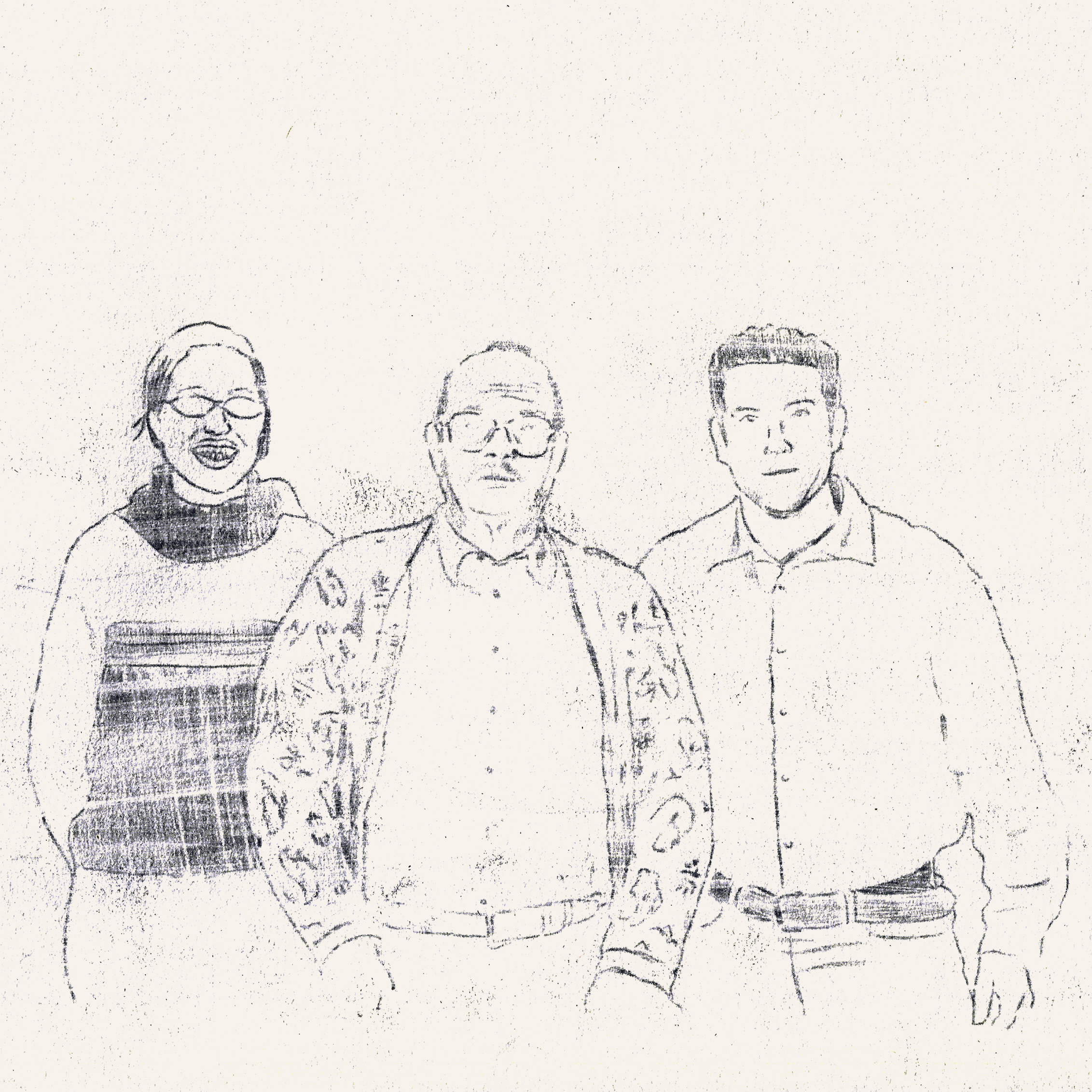

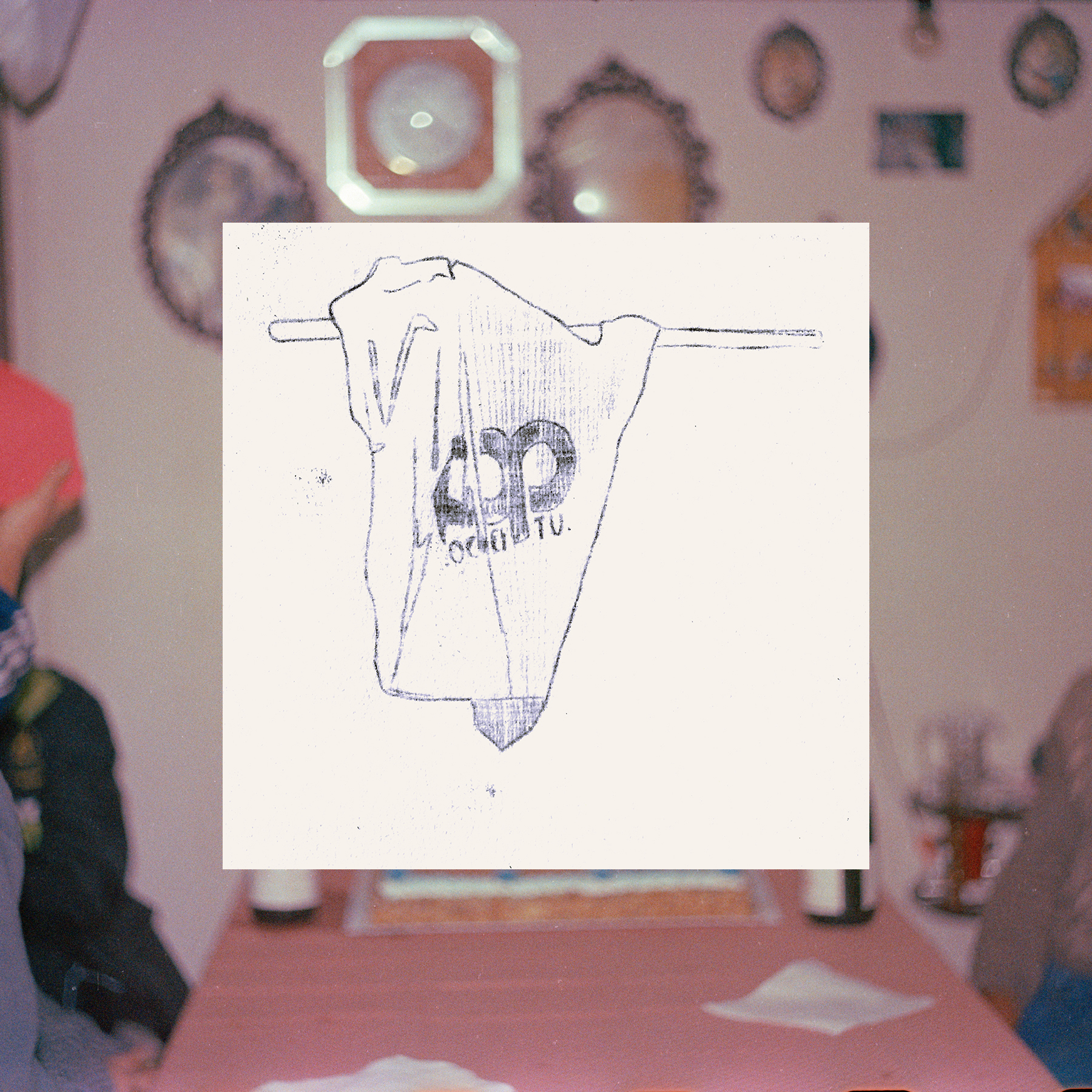

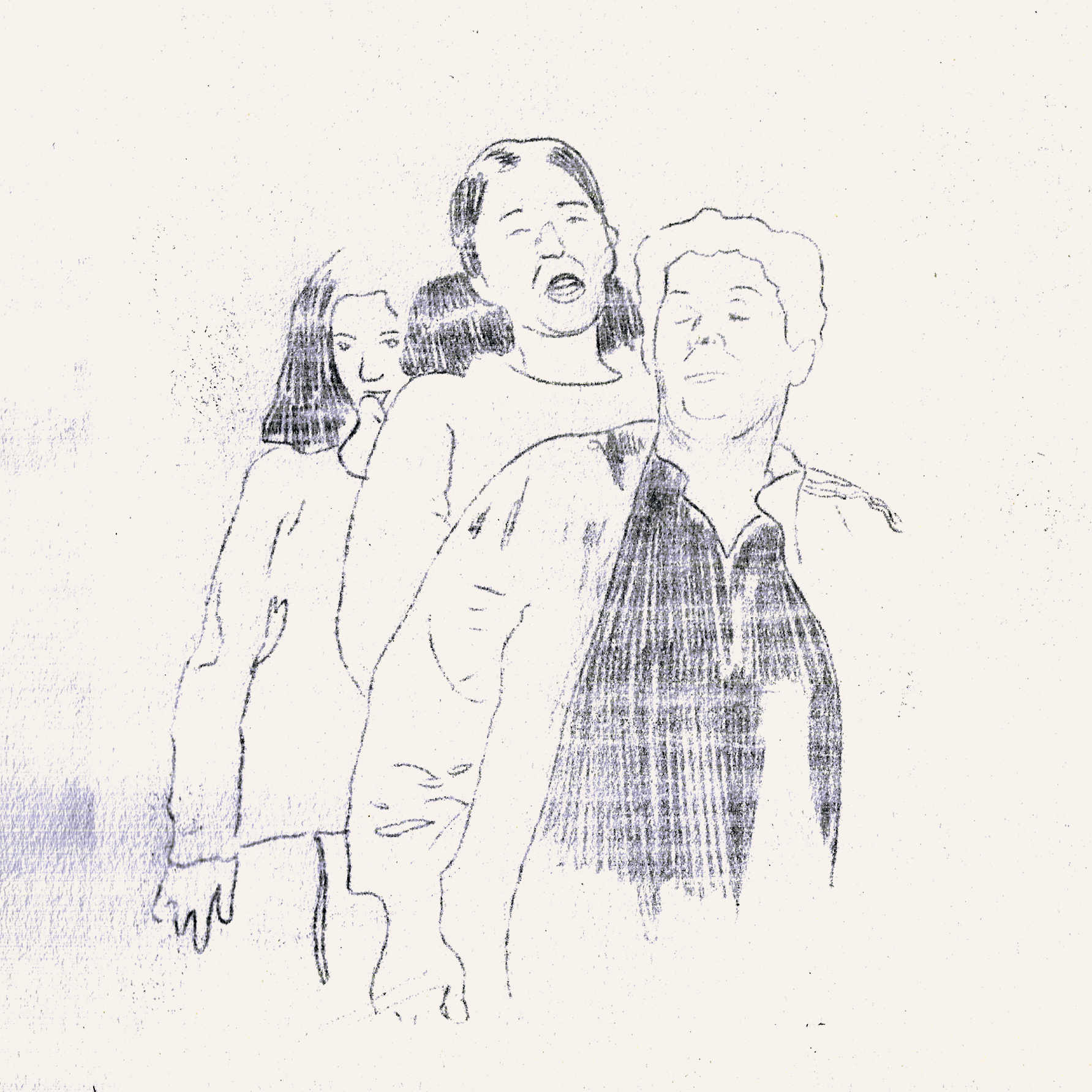

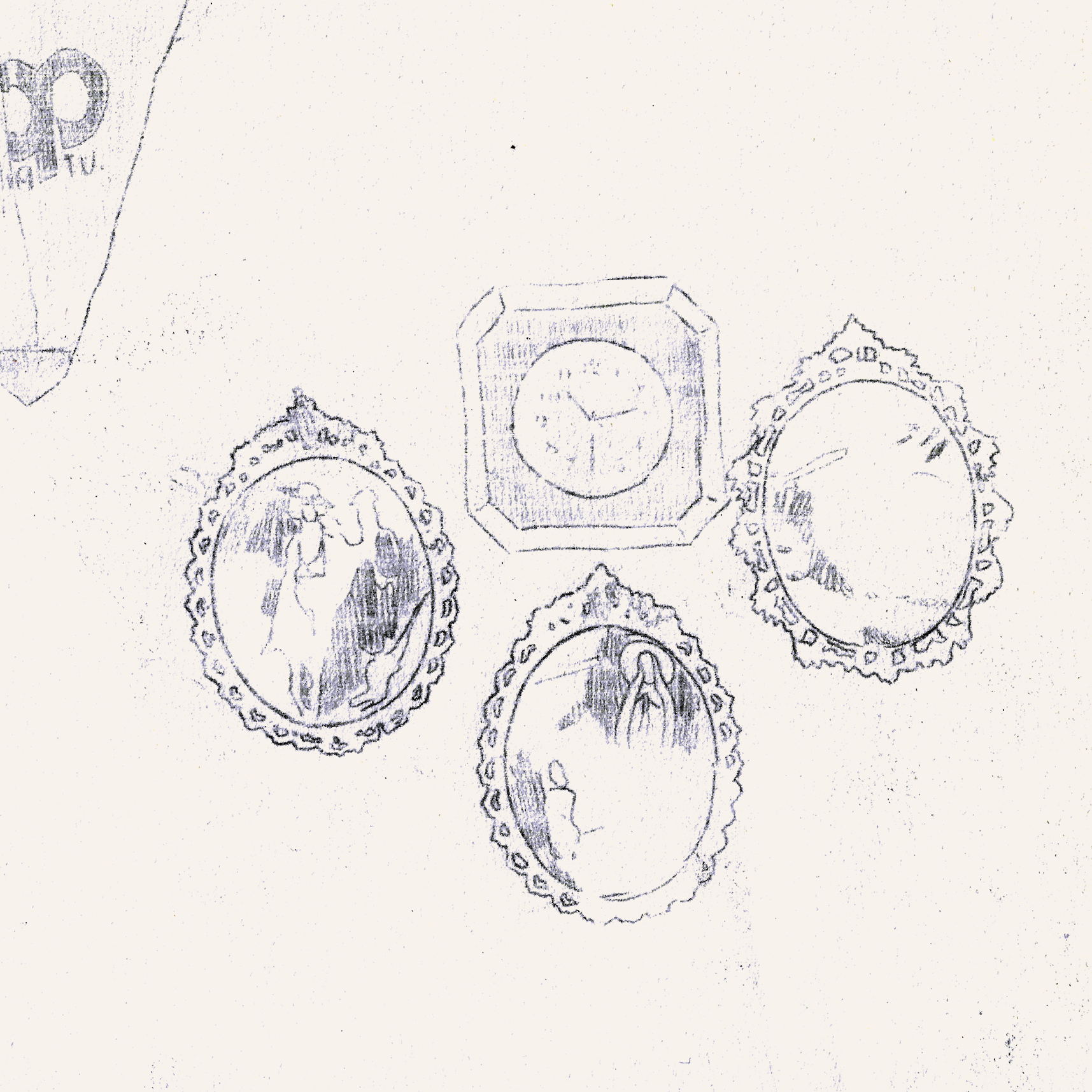
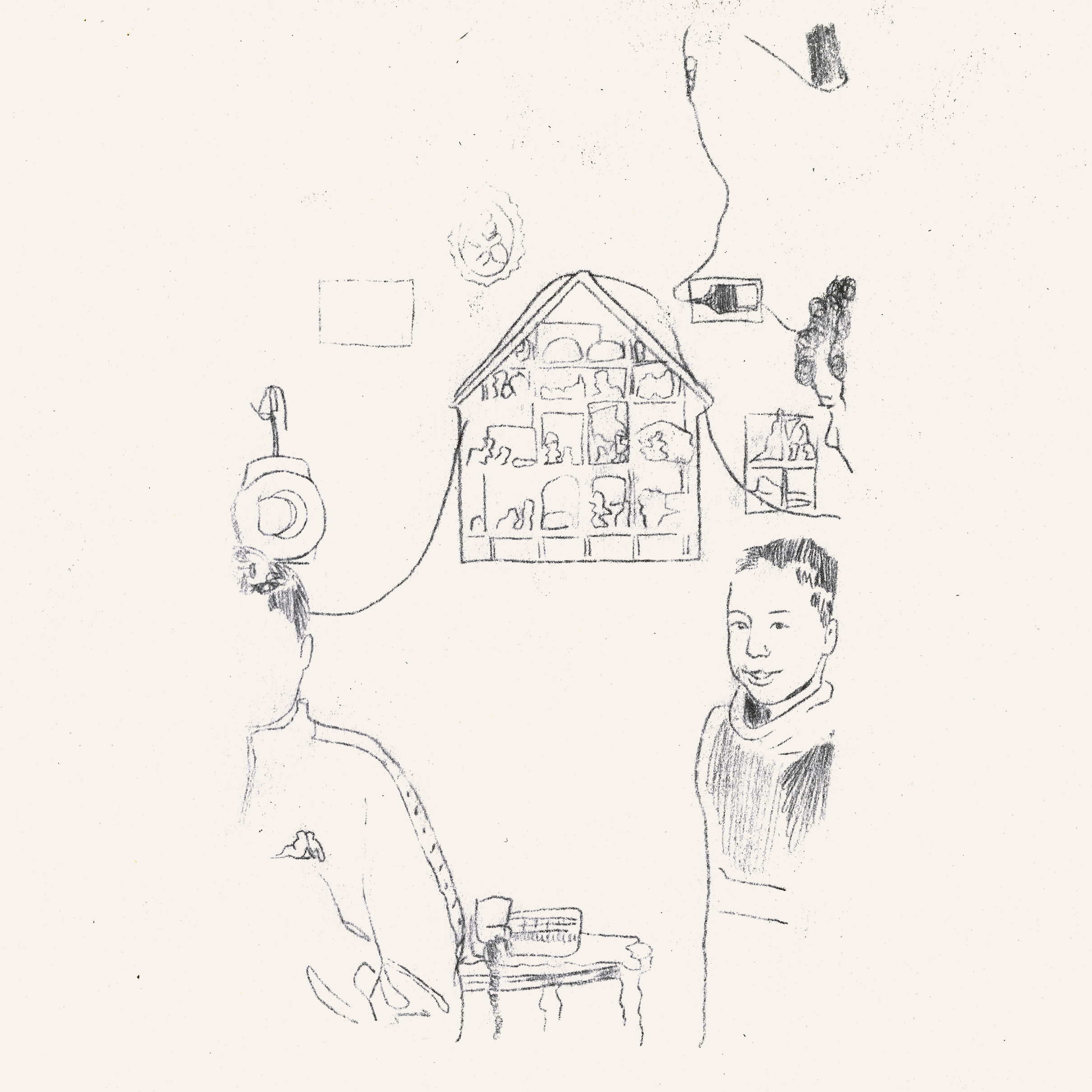



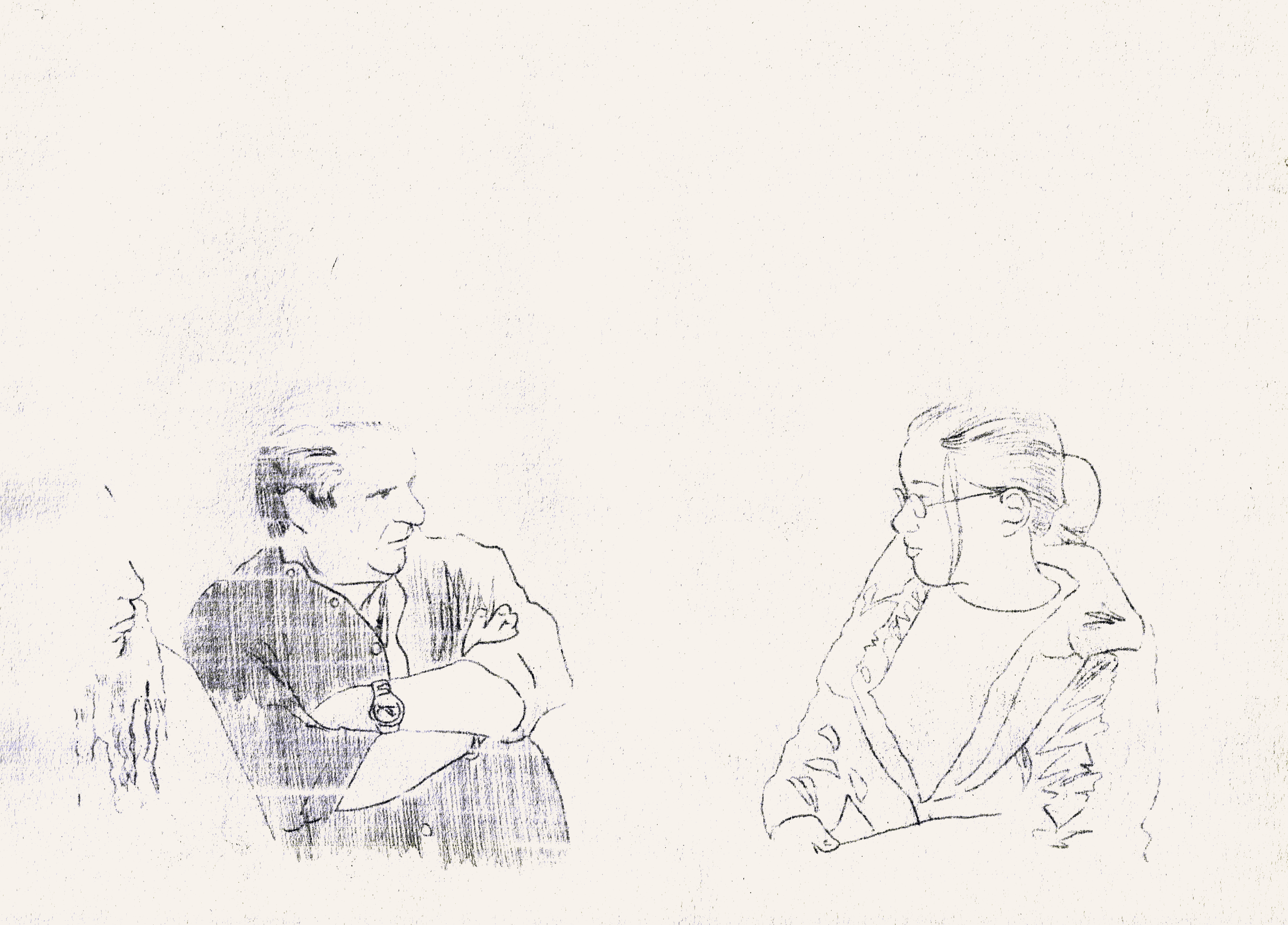



© 2020 Giorgia Agnese Cereda